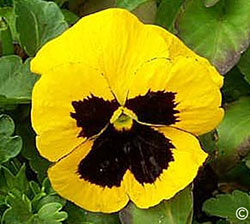Many flowers are edible and may be used to enhance the color, flavor and aroma of foods.
Edible flowers of the culinary herbs include chives, basil, dill, cilantro, sage, thyme and oregano. Popular annual flowers that are edible include nasturtium, calendula, squash, radish, African marigold and Johnny-jump-up. Perennial flowers recommended for the dinner table include hollyhock, pinks, daylily, rose-of-Sharon, apple, crabapple, mint, grape hyacinth, rose, lilac, tulip, yucca and violet.
Flowers are used as garnishes to enhance the presentation and appearance of dishes, and to add flavor. Pansies and violas offer a slightly sweet flavor and add nice color to many dishes. Nasturtiums give a peppery flavor to salads. Try adding flowers to vinegars and oils to preserve their flavor long after the flowering season is past.

Most edible flowers grow well in Colorado’s bright sunshine. Many can be readily grown in containers or raised beds for ease of harvest and the freshest taste. Harvest early in the day and use flowers when they’re at their peak. Avoid unopened blossoms and wilted flowers because they can have a bitter taste. Choose only flowers known to be edible. And don’t consume flowers that have been sprayed with pesticides.
Try edible flowers to add color and excitement to your next meal!
For more information, see the following Colorado State University Extension fact sheet(s).



